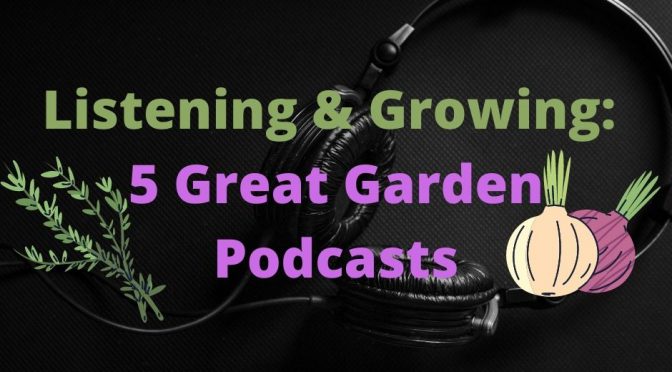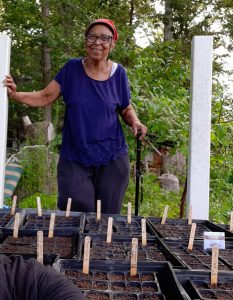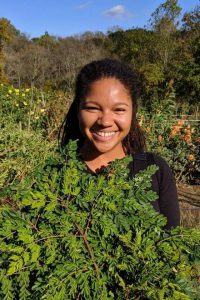As gardeners, we strive to learn and grow a little each year. We expand our gardens, try new varieties, and work a little harder to improve our soil and keep the weeds under control. To help you learn a little more about sustainable agriculture, garden techniques, and gardening history and culture, we collected five excellent podcasts.
The No-Till Market Garden Podcast
Dig deep into sustainable farming methods with The No-Till Market Garden Podcast. Created by The No-Till Growers, Jesse Frost, Jackson Rolett, and Joshua Sattin, it’s an excellent resource for home and commercial growers alike.
In each episode, they interview a commercial grower practicing no-till agriculture. They discuss their knowledge, systems, and experiences providing the listener with valuable insight.
Black in the Garden
Self-proclaimed Plantrepreneur Colah B Tawkin created her podcast, Black in the Garden, when she found other gardening podcasts uninspiring. She wanted to share the black gardening experience, so she created a podcast “that resides at the intersection of Black Culture and horticulture in a world where all the garden fairies and most of the gnomes are white. ”
Episodes will be “on a range of topics that directly influence and impact black plant keepers as we blackily impact and influence the world.”
Organic Gardener Podcast
Created by Jackie Marie Beyer, the Organic Gardener Podcast features interviews with home gardening experts, food activists, organic farmers, and more. Tune in to learn about everything plants from herbal medicine and foraging to growing flowers and soil health.
The Permaculture Podcast
Created by Scott Mann and co-hosted by David Bilbrey, The Permaculture Podcast is perfect for anyone wanting to create a more sustainable world. The duo interview a variety of permaculture experts, “if you’ve read a book on permaculture or attended a convergence, there’s a good chance you’ll find the author or speaker in the archives. If not, they’ll likely be on the show soon.”
They cover various topics from garden amendments and permaculture design to creating sustainable landscapes and socially responsible businesses.
Edible Activist Podcast
Join Melissa L. Jones on the Edible Activist Podcast as she interviews a diverse group of people of color on their journeys working in food and agriculture. She chats with “growers, farmers, artists, healers, and other extraordinary individuals, who exemplify activism in their own edible way.”
Next time you put on your headphones, consider one of these awesome gardening podcasts.



 Monday, December 14, 1 PM – Michael Twitty presents the History and Significance of Collards in the South
Monday, December 14, 1 PM – Michael Twitty presents the History and Significance of Collards in the South Tuesday, December 15, 1 PM [Part I] – Ira Wallace & Co. present Results and Updates from the 2020 HEIRLOOM COLLARDS TRIAL
Tuesday, December 15, 1 PM [Part I] – Ira Wallace & Co. present Results and Updates from the 2020 HEIRLOOM COLLARDS TRIAL Tuesday, December 15, 1 PM [Part II] – Jon Jackson leads a Collard Trial Farm Tour of Comfort Farms
Tuesday, December 15, 1 PM [Part II] – Jon Jackson leads a Collard Trial Farm Tour of Comfort Farms Wednesday, December 16, 1 PM – Amirah Mitchell presents Saving Seeds and Growing Community
Wednesday, December 16, 1 PM – Amirah Mitchell presents Saving Seeds and Growing Community Thursday, December 17, 1 PM – Ashleigh Shanti presents Cooking with Collards
Thursday, December 17, 1 PM – Ashleigh Shanti presents Cooking with Collards